Even in small doses, hydrogen sulphide spreads a foul smell like rotten eggs. In addition to the unpleasant odour, the toxic gas leads to adverse health effects. H2S is particularly insidious because in high concentrations it numbs the sense of smell.
Corrosion of pipelines, the concrete plant and the plant are other serious problems associated with hydrogen sulphide. Under certain conditions, chemical processes in the sewer lead to the conversion of hydrogen sulphide to sulphuric acid and concrete corrodes. High financial expenses for excavation and rehabilitation work are the result.
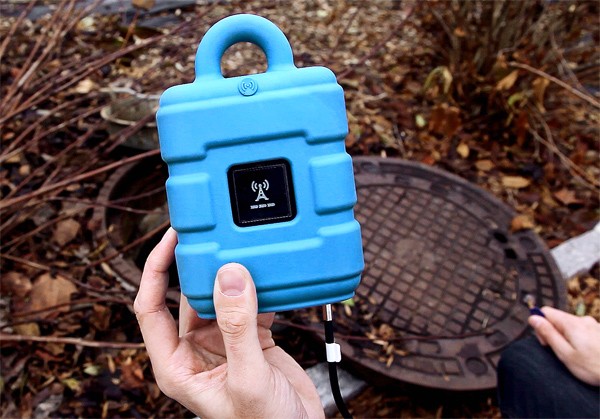
In addition to monitoring the H2S in the sewer system, it is therefore important to initiate measures against excessive H2S levels. There are different methods to combat hydrogen sulphide. Dosing controls are used to remedy or prevent excessive hydrogen sulphide concentrations.
The technical depth of integration and the degree of automation differ. Often, a simple monitoring and recording of the H2S values over a longer period of time is the first step. The system is gradually being expanded to a fully integrated solution including automatic dosing control. With a higher level of integration and automation, the costs increase on the one hand, but on the other hand there are savings and added value in the efficiency, the process and the operation of the entire application itself.
1. monitor and query measured values locally on site
With the myDatasensH2S, the H2S values and the temperature are recorded on site in the duct. Up to 82,776 measuring cycles can be stored in the data memory of the myDatalogH2S.
The values from the myDatasensH2S device are read out locally. To do this, go within range of the myDatasensH2S (approx. 15 metres) with a smartphone and the GasBuster app. The app now displays the current readings and allows you to transfer the historical data from the data memory in the device to the central server web platform using a synchronisation button. The smartphone’s GSM connection is used for this transfer.
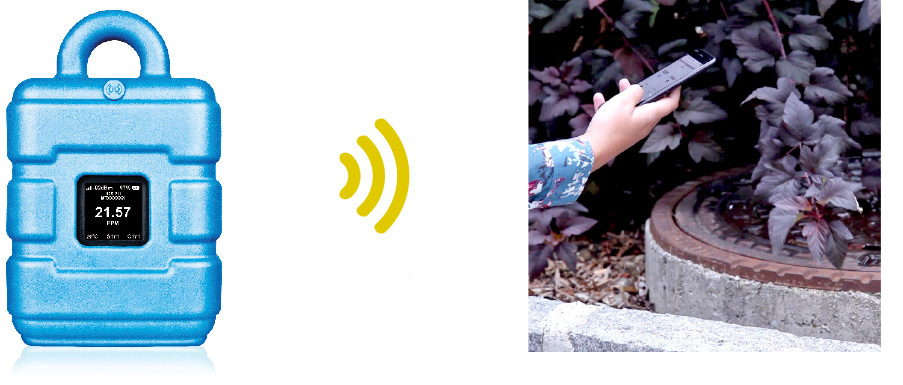
Alternatively, the data can be processed locally using a PC or laptop and the free “DeviceConfig” software. In this variant, the data is also transmitted from myDatasensH2S to DeviceConfig.
In both cases, there is no need to open or enter the shaft to read out the data. However, you will only receive current measured values if you are within range of approximately 15 metres around the measuring point.
2. Monitor and transmit measured values via mobile radio to the server
With an integrated mobile modem, the recorded values are regularly sent to the central web platform. A trip to the measuring point is thus only necessary in the calibration interval of the sensor, about every 6 months. Personnel costs are reduced and your employees can concentrate on more important, value-adding activities.
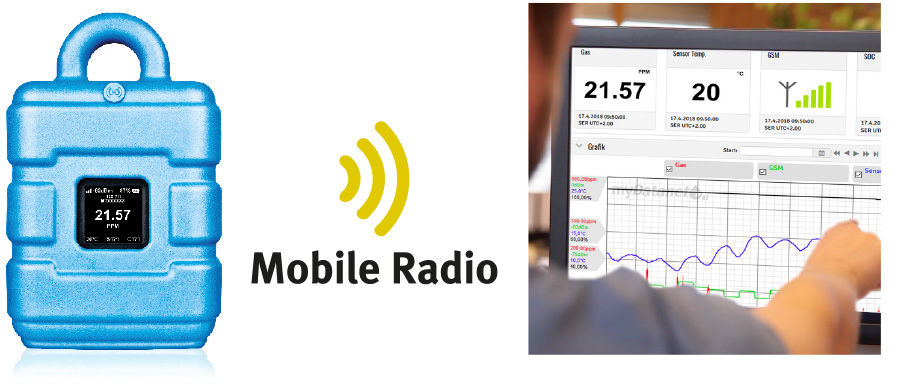
Both the recording cycle and the transmission cycle are adjustable. Alarm thresholds can be used to trigger immediate transmission when a threshold value is exceeded. With Ultra Low Power technologies, battery runtimes of the myDatasensH2S result in up to 2 years.
3. monitor and control locally
As soon as you monitor the H2S levels in sewers, the desire for control will quickly arise This way you not only know how high the H2S concentration is on site, but you can also do something about it.

With the mA Link, you can realise local control. The mA Link must be within 15 metres of the myDatasensH2S. Via the analogue output you address a local pump control or a local display. It is also possible to transfer the values to an existing PLC.
Bear in mind that the mA Link is connected to the pump controller, for example, using a cable. This results in technical as well as economic limits in the cable length.
In addition, the myDatasensH2S transmits the data to the platform via mobile radio. This means you always have an overview of the measuring point and can be sure that the pump controller is doing its job properly;
4. Monitoring and decentralised, manual dosing via mobile radio
With the mobile phone version of myDatasensH2S, you send the measured values to a central web platform, as already explained under point 2. In the office, you view the H2S measured values and decide manually how you want to dose.
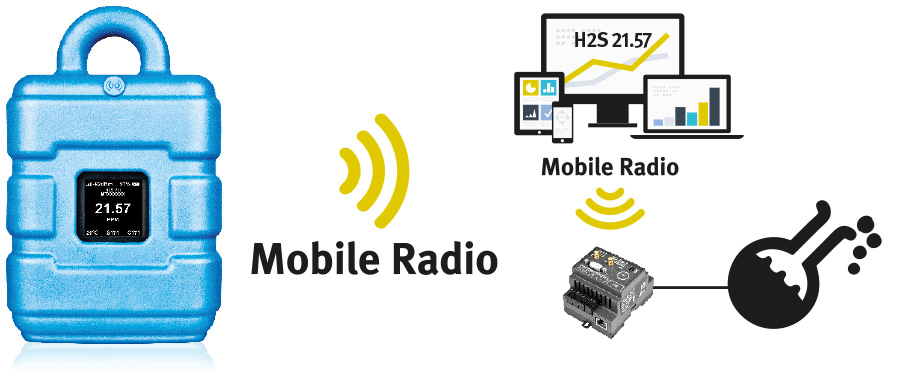
Your dosing control is addressed with a myDatalogC3. The values are also set manually on the web platform and sent over the air to the rapidM2M C3 via mobile radio. This takes over the dosing control.
Since you transmit the H2S values from the measuring point via the web platform and then to the dosing control with mobile radio, the geographical distance between the measuring point and the dosing control is irrelevant. No cable connection is required between the myDatalogH2S and the dosing controller or the myDatalogC3.
5. Monitor and automatically dose via mobile radio with its own logic
With the decentralised, manual option to effectively monitor and control H2S values, you will gain a lot of experience and get to know your plant in detail. You will recognise patterns that can be automated and develop your own logic.
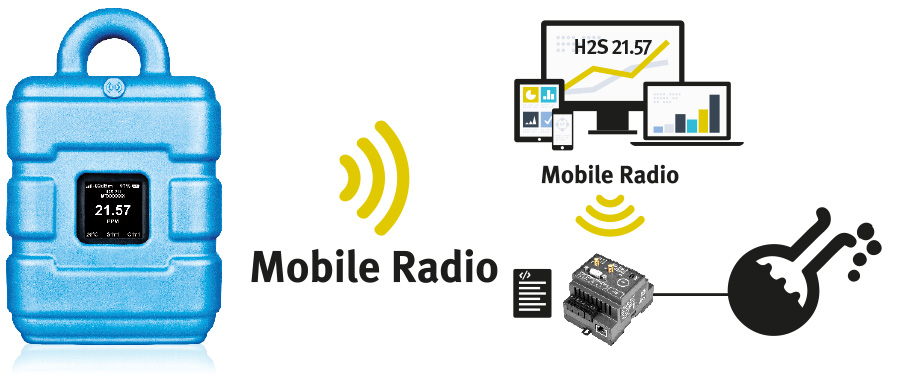
The myDatalogC3 can be programmed with the same logic. Automatisms and a timer can be taught to the myDatalogC3 with a C-like script language built on PAWN. The result is a learning system with deep technical integration that monitors, checks and automatically controls the H2S values.


